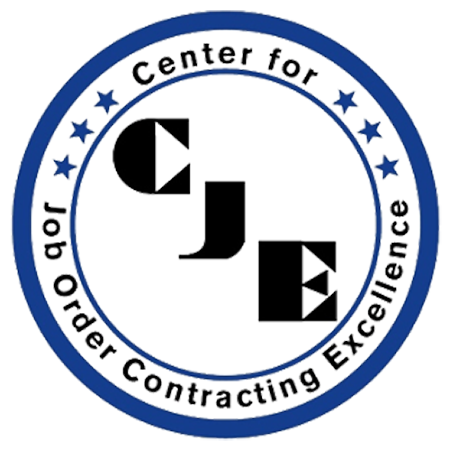Introduction
Public sector and multi-building facility routinely scope, procure, award, and execute thousands of renovation, repair, maintenance, sustainability, and “minor” new construction projects. For most facility portfolio owners these types of projects represent a significantly larger capital outlay than major new construction. They are critical to long-term economic viability as well as meeting the needs of an organizations mission.
While annual capital cost are second only to personnel costs for most organizations, few entities public sector or private, manage the built environment using LEAN best management practices. Instead, most real property portfolio owners continue use ‘ad hoc’ methods and have little visibility into costs, requirements or relative levels of productivity.
Gradually, this situation is beginning to change as collaborative, transparent, and productive construction delivery methods, notably Job Order Contracting, JOC, are being implemented. Though leverage of facility LEAN best management practices such as job order contracting and supporting technologies is now limited to a small percentage of the AECOO sector (Architecture, engineering, Construction, Operations, Owner), the benefits to all stakeholders are real. In fact, widespread practice of collaborative construction delivery methods is necessary in order to support economic and environmental viability.
Job Order Contracting Process
Job order contracting is a proven solution for projects that are too large or too numerous for internal personal to accomplish. In use, since the late 1980’s, job order contracting, has proven to meet the need for timely delivery of quality work. Owners can achieve their goals and actually complete more projects on-time and on-budget for the same level of funding or less.
Job order contracting is now in use by Federal, State, County, and Local Governments; Healthcare, Education, Transportation (Airports, Mass Transit, DOTs) and has even expanded into the private sector.
Job order contract has several distinct characteristics as listed below. Unfortunately some “JOC-like” services have entered the market and tend to “muddy the waters”, however, “true JOC” requires the following fundamental elements:
- Indefinite delivery – indefinite quantity (IDIQ): JOC programs typically provide a range of typical project size, overall potential planned expenditure for the duration of the JOC, and a minimum level of funding for the contract.
- Unit price book: Cost estimating and pricing for individual projects (task orders) is determined from a line item unit price book (UPB). It is critical that this UPB be developed using industry standards for cost engineering and data architecture. MasterFormat is the data architecture of choice in North America.
- Collaboration: Owners and contractors have the mutual responsibility to share all information with respect to project work scopes, costs, and any factors related to the project.
- Performance basis: Additional work is awarded to the contractor by the owners based upon successful completion of work.
- Shared risk/reward: This is a long-term commitment by both the Owner and the Contractor. A typical JOC contract runs from 3-5 years.
- Technology: Supporting technology is critical to job order contracting. JOC is the implementation of robust LEAN best management practices. Technology is needed to support cost-effective and consistent deployment of these LEAN workflows. Running JOCs in spreadsheets is counterproductive and monitoring and information sharing become virtually impossible.
- Cost Visibility and Transparency: The unit price book provides an unparalleled level of cost visibility. Both owners and contractors create estimates for each JOC project/task order. (Owners typically conduct internal estimates on projects of a certain size ($100,000 to $150,000 or larger). Owners review and approve/disapprove all contractor task order estimates, and as noted, may compare the contractor estimate to the owner estimate.l
- Owner and Contractor Capability: JOC is NOT for everyone. Owners and contractors must be capable and willing to collaborate, share information, and know how to create line item unit price cost estimates for renovation, repair, sustainability, maintenance, and construction projects. (Note: An Owners representative can be used vs. direct owner participation. Even in this instance, however, and owner MUST conduct regular audits to assure program viability and performance).
A typical job order contract workflow is shown in the following graphic.
Job Order Contracting Benefits
Multiple case studies, research studies, and reports have been done on job order contracting and similar collaborative construction delivery methods.(1) They describe and highlight the following benefits provided by JOC.
1. The establishment and/or transparency of cost
2. The reduction of procurement and overall project cost
3. Better definition, establishment, and attainment/reduction of schedules
4. Significant reduction of change orders
5. Virtual elimination of legal disputes
6. Longer term and better owner/contractor relationships
7. Greater usage of local labor and/or small business labor, and associated better knowledge of local site conditions and owners’ facilities and/or specific requirements.

(1) Aller, G. L. (2002). Job order contracting for novices: just the basics. Retrieved September 4, 2006 from http://www.garyaller.com/pdf/JOC%20for%20Novices.pdf Henry, E. & Brothers, H. S. (2001). Cost analysis between SABER and design bid build contracting methods. Journal of Construction Engineering and Management, Vol. 127, No. 5, 359-366. Kashiwagi, D. (2002). Documented performance of the JOC construction delivery system (1994 – 1998). Cost Engineering, Vol. 44, No. 6, 14-20. Konchar, M. & Sanvido, V. (1998). Comparison of U. S. project delivery systems. Journal of Construction Engineering and Management, Nov/Dec 1998 pg 435-444. Mulcahy, F. S. (2000). The effectiveness of partnering and source selection in job order contracting – masters thesis. Washington, DC: National Technical Information Service. Songer, A. D. & Molenaar, K. R. (1996). Selecting design-build: public and private sector owner attitudes. Journal of Management in Engineering. Vol. 12, No. 6, November/December, 1996. Williams, J. (1994). Exploring and implementing job order contracting. Unpublished master’s thesis. University of Alaska, Fairbanks, Alaska.



